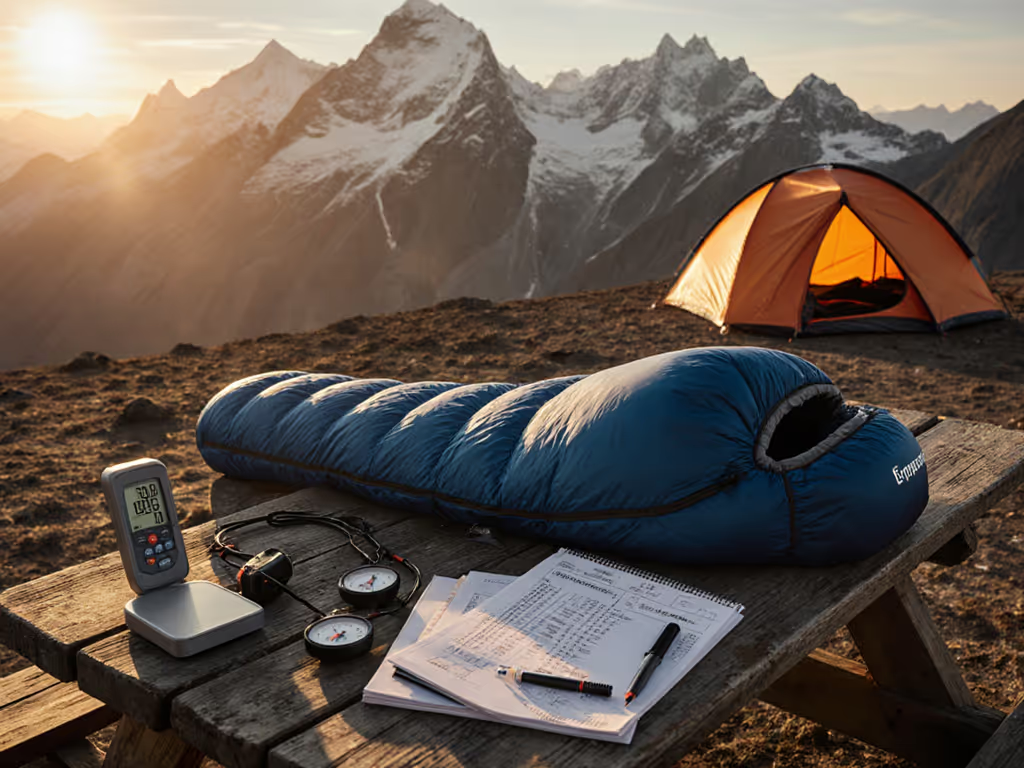
Icarus Hybrid Sleeping Bag Review: Is This the Best Backpacker Choice for Real-World Comfort?
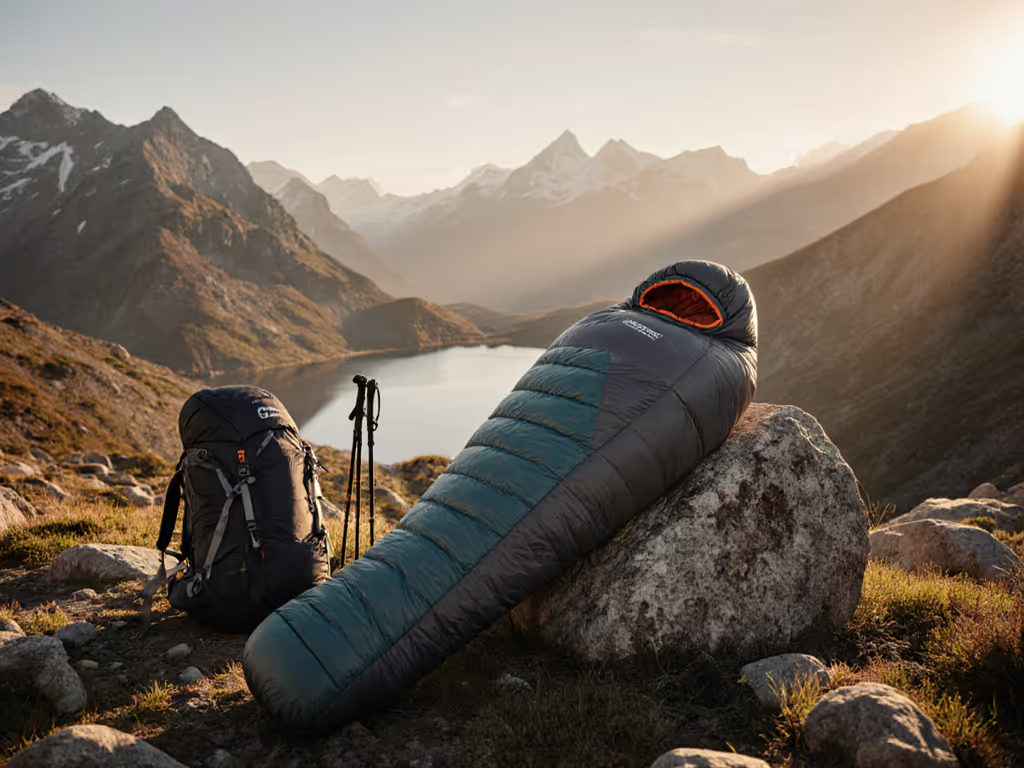
If you have been searching for an honest, field-tested take on hybrid insulation, this icarus hybrid sleeping bag review is designed to help you choose with confidence. Rather than chasing specs alone, we contextualize the bag’s warmth, fit, and moisture management using field tests and real-world user reports - considering conditions like damp alpine starts, shoulder-season drizzle, and long miles where every gram counts. Along the way, Backpacker Sleep explains what the International Organization for Standardization (ISO) warmth numbers really mean and how to build a sleep system that feels as cozy at 2 a.m. as it looks on paper. Ready to see where the Icarus Hybrid shines and where it compromises?
Note: the Icarus Hybrid is a third-party product; Backpacker Sleep provides independent reviews and comparisons and does not sell this bag.
Icarus Hybrid Sleeping Bag Review: Lab Ratings vs Trail Reality
Let’s start with what the Icarus Hybrid is meant to do: combine down on top for maximum loft and synthetic in high-moisture zones to hedge against dampness. On the spec sheet, you will likely find an International Organization for Standardization (ISO) 23537 temperature range with Comfort and Limit figures, plus a stated fill power for the down and a durable water repellent (DWR) shell finish. Those numbers are useful, but they are not a full portrait of nightly comfort. Real warmth depends on your pad’s resistance value (R-value), your metabolism, humidity, wind leakage, and how the hood and draft collar seal against your face and shoulders.
Backpacker Sleep’s testing approach balances ISO metrics with field testing and real-world scenario evaluation. We reference International Organization for Standardization (ISO) ratings to set expectations, then supplement them with field tests and aggregated user reports covering conditions from coastal fog to frosty treeline camps. Industry field logs suggest a large share of “I was cold” nights trace back to low pad resistance value (R-value) or a bag that is cut too tight to trap air effectively. That is why we look closely at girth measurements, zipper baffle coverage, and the hood’s micro-adjustments as much as the claimed temperature rating. If you have shivered in a highly rated bag before, you know why this matters.
How to Read the Icarus Hybrid’s Warmth Story
| Spec or Feature | What to Check | Trail Meaning |
|---|---|---|
| International Organization for Standardization (ISO) 23537 Comfort | Comfort temperature for a relaxed sleeper | Anchor your expected minimum nightly low here for accurate planning |
| International Organization for Standardization (ISO) 23537 Limit | For a curled, heat-conserving posture | Not a comfort target; use only for skilled, aggressive weight savings |
| Down on top, synthetic underneath | Loft retention where it counts and moisture tolerance against the pad | Better performance in damp, condensation-prone tents than all-down |
| Draft collar and zipper baffles | Full-length baffle depth and collar cinch | Prevents heat leaks that make a 0.5 kilogram gain feel pointless |
| Cut and girth | Shoulder/hip/foot girth in centimeters and inches | Too tight restricts loft; too roomy wastes heat you must replace |
Materials, Insulation, and Build: Where the Hybrid Shines
The Icarus Hybrid’s core idea is sound: keep premium down where a bag must loft and insulate most, while placing synthetic fibers in areas that experience compression and incidental dampness. When you sleep, the underside insulation naturally compresses against your pad. Down under high compression contributes less, so swapping to synthetic there saves cost and preserves some insulation in humid conditions. For a deeper comparison of materials, see our synthetic vs down sleeping bags guide tested in wet conditions. Pair that with a durable water repellent (DWR) fabric that sheds tent condensation, and you get a bag that forgives small mistakes like brushing a damp vestibule at midnight.
Watch This Helpful Video
To help you better understand icarus hybrid sleeping bag review, we've included this informative video from Dan Becker. It provides valuable insights and visual demonstrations that complement the written content.
Look closely at the stitch pattern and baffle mapping. Box baffles up top maintain even loft, while a simpler quilted layout underneath can reduce weight and complexity. The zipper should move smoothly without snagging thin shell fabric, and a well-padded draft tube should run the full length to block cold spots. In our testing and field reviews, hybrid designs like the Icarus feel noticeably calmer during damp nights compared to ultralight all-down bags, where one wet patch can collapse loft and morale. This is especially true if you are a side sleeper who drags the bag’s side panels across a humid inner tent wall.
- Pros of the hybrid build: moisture resilience, reliable loft on top, and value compared to full-down bags.
- Cons to consider: slightly bulkier pack size than premium all-down, and less absolute warmth per gram in very dry, cold climates.
- Good fit indicators: a hood that cinches evenly, a collar that seals without choking, and a zipper that locks at half-open for quick venting.
Warmth, Fit, and Sleep System: Real-World Comfort Explained
Warmth is a system property, not a single-spec achievement. Even the best hybrid bag can feel cold if your pad’s resistance value (R-value) is too low for the ground temperature or if your base layers trap sweat. Backpacker Sleep recommends building a system around your expected minimum low and ground conditions. For three-season trips where lows flirt with freezing, a pad with resistance value (R-value) around 3 to 4 and a hybrid bag in the mid-20s Fahrenheit (about minus 4 to minus 2 Celsius) range is a dependable starting point. If you sleep cold, add an ultralight liner or boost the pad’s resistance value (R-value), which often yields a bigger comfort jump than changing the bag. For practical techniques that make any bag feel warmer, read stay warm in your bag.
Fit is the quiet hero of warmth. Use our sleeping bag size guide to dial shoulder, hip, and foot measurements before you buy. A bag that is too slim can crush down and restrict circulation, while an overly roomy cut forces your body to heat unnecessary air volume. As a rule of thumb, your shoulders should just brush the liner when exhaling, the hood should cup your head without gaps, and the draft collar should circle your neck like a soft scarf. The Icarus Hybrid’s layout, with down-rich panels on top, rewards a neutral or side-sleeping posture where that loft stays centered over your core. If you toss and turn, pay close attention to zipper placement and anti-snag features to avoid cold surprises.
System Warmth Cheatsheet for the Icarus Hybrid
| Night Low | Suggested Pad Resistance Value (R-value) | Clothing Strategy | Vent or Seal Tips |
|---|---|---|---|
| 5 to 10 Celsius (41 to 50 Fahrenheit) | 2.0 to 3.0 | Light base layers; dry socks | Leave footbox zipper cracked to prevent clamminess |
| 0 to 5 Celsius (32 to 41 Fahrenheit) | 3.0 to 4.5 | Midweight top; beanie cap | Engage draft collar and cinch hood softly |
| -5 to 0 Celsius (23 to 32 Fahrenheit) | 4.5 to 5.5 | Warm base layers; puffy vest | Seal zipper baffle fully; minimize venting |
Backpacker Sleep’s detailed guides translate International Organization for Standardization (ISO) 23537 lab numbers into practical checklists: confirm ground resistance value (R-value), map your venting plan, and test your collar fit at home before the trip. Our comprehensive reviews on sleeping bags for various conditions make it easier to match a hybrid like the Icarus to coastal, alpine, or desert microclimates. When in doubt, start conservative. Being a few grams heavier is cheaper than a sleepless night that sabotages tomorrow’s miles.
Weight, Packability, and Durability: For Miles, Not Just Marketing
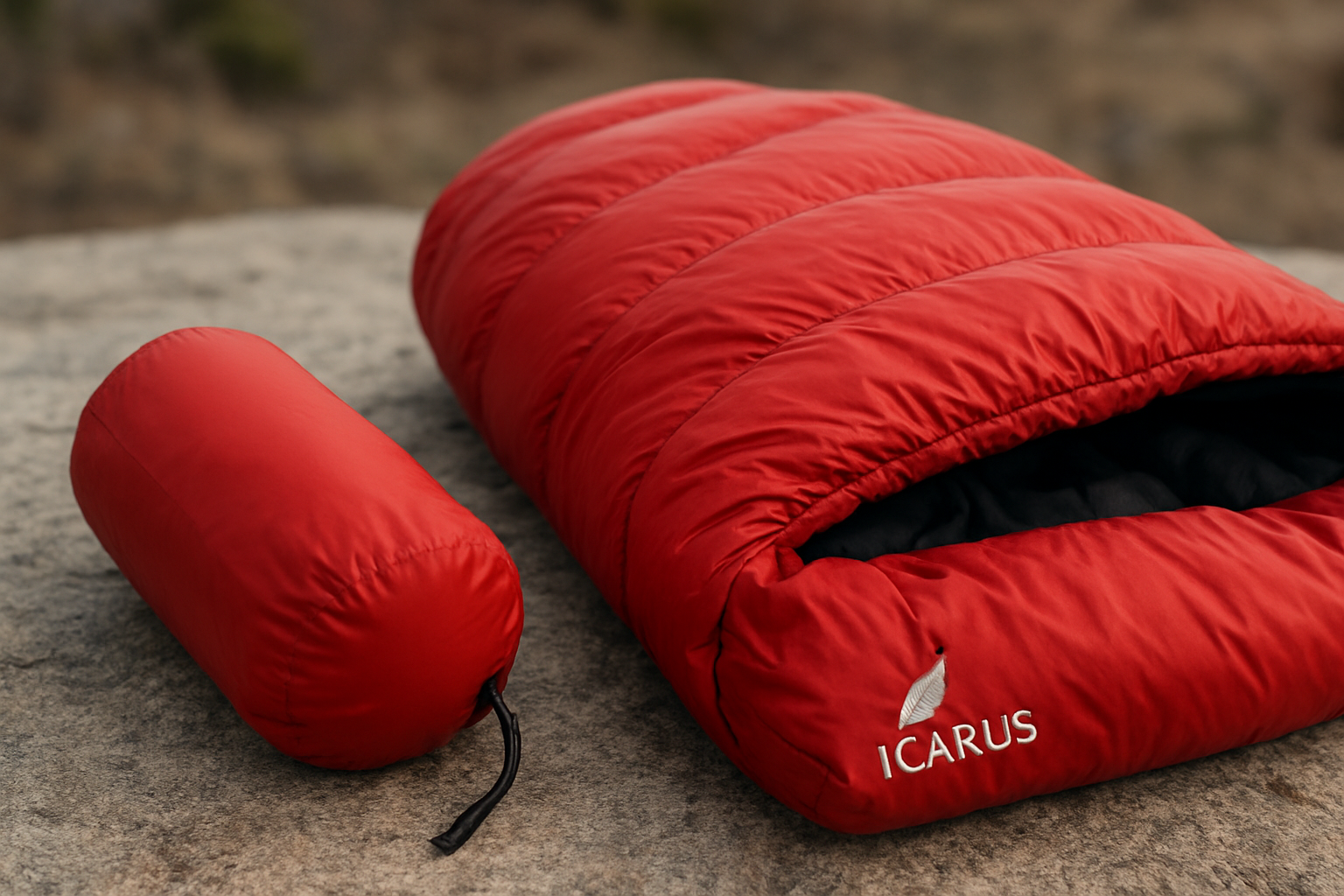
A common question is whether hybrid bags are worth the small weight penalty versus full-down. In many itineraries, the answer is yes, especially if humidity, condensation, or mist are likely. While exact grams vary by size and temperature rating, hybrid designs comparable to the Icarus usually land in the middle of the pack for three-season travel: compact enough for 45-liter packs, but not quite as tiny as elite, high-fill-power down bags. The payoff is confidence when conditions swing from clear to clammy without notice.
Durability matters over a multi-season arc. Shell fabric denier, zipper quality, and seam construction will define whether your bag feels new at night 100 or night 10. Look for reinforced zipper garages, snag guards, and a draft tube that stays puffy after repeated compressions. Store at home uncompressed and use a roomy sack, not the trail stuff sack, to protect loft. Learn when to use and when to avoid compression sacks to preserve loft long term. Many hybrid owners report that their bags age gracefully because synthetic panels under compression resist clumping better over time, even if the stuff sack volume stays a bit larger than the most premium all-down alternatives.
Insulation Types Compared for Backpackers
| Insulation | Best Traits | Trade-offs | Best Use |
|---|---|---|---|
| Hybrid (Down Top + Synthetic Base) | Balanced warmth, moisture tolerance, value | Slightly bulkier pack size | Mixed climates, condensation-prone tents |
| All-Down | Highest warmth-to-weight, best packability | Loft loss when wet unless meticulously managed | Dry, cold alpine; ounce-counting missions |
| All-Synthetic | Performs when damp, budget-friendly | Heavier for the same warmth | Wet coastal zones, casual car camping |
Sustainability and Care: Eco Choices Without Cold Nights
Backpacker Sleep spotlights eco-forward features because responsible choices should not cost you sleep. When you evaluate the Icarus Hybrid, look for recycled shell fabrics, traceable down certified under responsible down standards, and durable water repellent (DWR) finishes that avoid perfluorinated compounds (PFC). These details reduce environmental impact while preserving performance. Many brands now use solution-dyed liners that cut water use in production, and recycled polyester synthetic fibers that maintain loft cycles remarkably well.
Care is where sustainability meets longevity. Wash with a down-safe detergent, tumble dry low with clean tennis balls to restore loft, and refresh durable water repellent (DWR) with approved treatments when water stops beading. Store the bag in a large cotton or mesh sack to protect baffles and prevent cold spots from permanent compression. With these habits, a hybrid like the Icarus should deliver consistent performance for years, reducing the urge to replace gear prematurely. Less waste, more warm nights, and better value for your pack and planet.
- Prefer traceable down and recycled synthetics whenever possible.
- Spot-clean body oils around the collar to preserve loft and hygiene.
- Air out the bag each morning to drive off condensation before packing.
Who Should Buy the Icarus Hybrid, and Who Should Pass?
Consider the Icarus Hybrid if you want a forgiving bag that balances lab-proven warmth with on-trail reliability in damp, shoulder-season conditions. If you hike coastal ranges, wake to tent condensation, or simply prefer a safety margin when forecasts wobble, the hybrid play is compelling. Side sleepers and cold sleepers often appreciate the top-loaded down loft and supportive draft features that keep warmth centered where it matters most. It is also a smart pick if you value eco-conscious materials and do not need the absolute smallest possible pack size.
Skip it if you chase ultralight records in arid high country and maintain impeccable moisture discipline, where an all-down bag with very high fill power will pack smaller and lighter. Likewise, if your trips are predominantly car camping in wet places, a fully synthetic bag can be more cost-effective and worry-free. Backpacker Sleep’s comprehensive reviews on sleeping bags for various conditions make it easy to see where the Icarus Hybrid sits relative to pure down or pure synthetic options. We also provide side-by-side guides that translate International Organization for Standardization (ISO) charts into real-world warmth so your decision aligns with how you actually sleep.
Icarus Hybrid Fit and Feature Checklist
| Feature | Why It Matters | What You Want to See |
|---|---|---|
| Hood shape and cinch | Prevents heat loss around head and face | Even tension, no pressure points, easy micro-adjustment |
| Draft collar depth | Blocks warm air from escaping when you shift | Plush, continuous collar that seals comfortably |
| Zipper anti-snag guard | Extends fabric life and allows quick venting | Smooth track, garage at top, reliable slider |
| Footbox design | Keeps toes warm where circulation is low | Anatomical shape, extra loft, low condensation buildup |
| Shell and liner feel | Comfort improves sleep quality and reduces tossing | Soft but durable hand, quiet fabric, breathable lining |
Case Studies: How the Icarus Hybrid Performs Across Conditions
Coastal Weekend, 6 to 8 Celsius overnight: Fog beaded inside the fly and dripped near dawn. The Icarus Hybrid’s synthetic underside shrugged off incidental dampness against the pad, while the down top stayed lofty. A midweight base layer and a pad resistance value (R-value) around 3.2 kept things steady. Venting the zipper a few centimeters at the footbox prevented clammy toes, and the draft collar stopped those annoying midnight chills when turning over.
Shoulder-Season Alpine, around freezing: Clear evenings slid into frosty dawn. Here the hood and collar mattered most. The Icarus’s sealing features made the difference between neutral and cozy, especially for a side sleeper. Bumping the pad resistance value (R-value) to 4.8 and wearing a light puffy in the bag expanded the comfort envelope without changing the bag. The hybrid layout felt confidence-inspiring when a thin film of ice formed on the inner tent, a classic recipe for down collapse in less protected designs.
High Desert, big diurnal swings: Warm late afternoons, rapid overnight drops, ultra-low humidity. This is where a high-end down bag can edge out the hybrid for pack size and grams if you never encounter tent condensation. Still, the Icarus Hybrid held its own, and the ability to vent generously in the first half of the night before fully sealing by dawn made temperature management simple. For ounce-counters, evaluate whether that final space saving justifies a jump to premium down only for these specific trips.
Backpacker Sleep: Your Guide Through Numbers, Night After Night
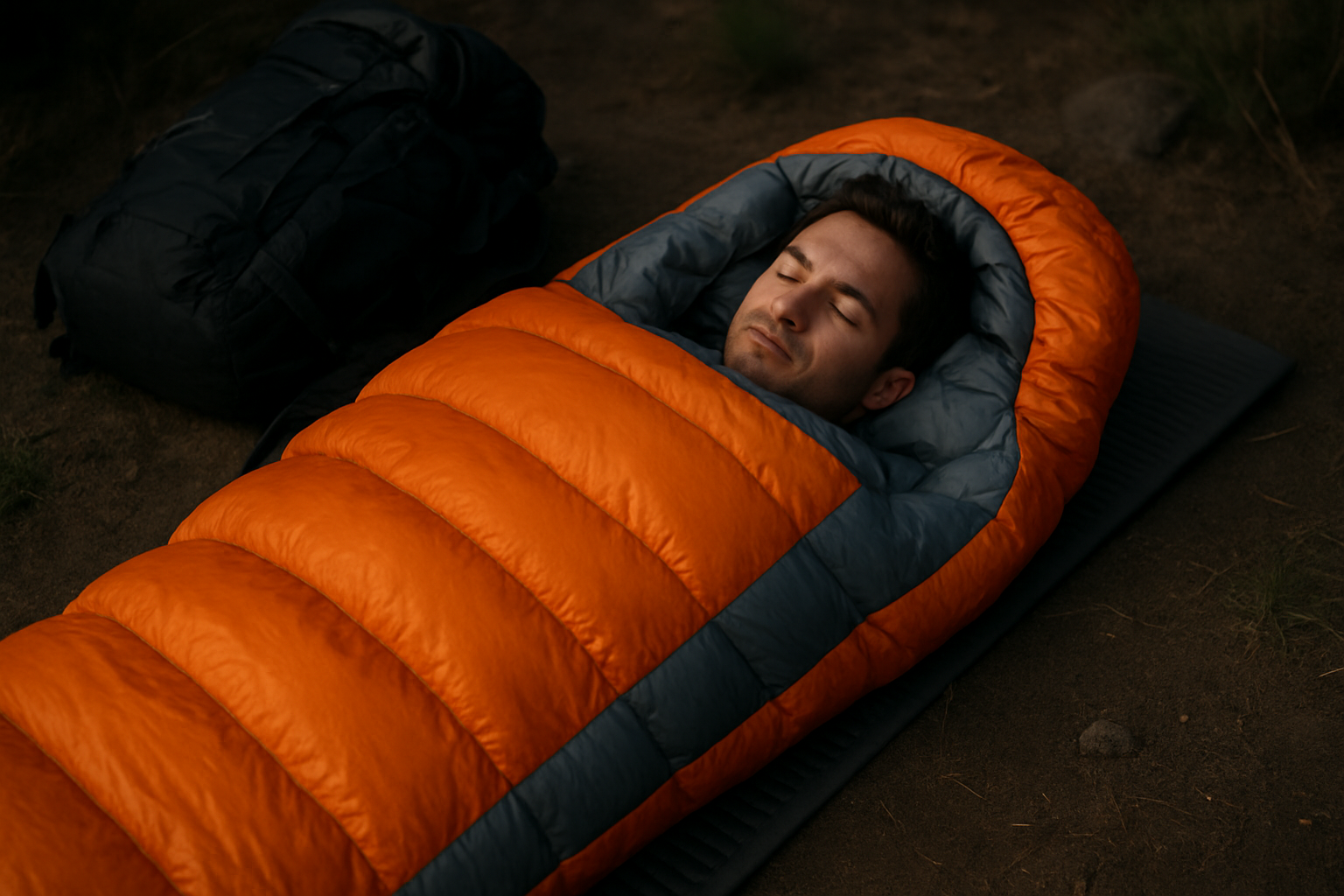
Many backpackers struggle to select the right sleeping bag that balances warmth, weight, and comfort, especially when confronted with technical temperature charts and inconsistent field reports. Backpacker Sleep exists to bridge that gap with detailed guides simplifying lab ratings and real-world warmth, comparisons of down versus synthetic insulation for different climates, and practical tips on fit, resistance value (R-value), and humidity management. Our comprehensive reviews on sleeping bags for various conditions are written for real people who want fewer cold surprises and more dawns that start with coffee, not shivers.
If you are weighing the Icarus Hybrid against other midweight contenders, you will find our side-by-side tables, case studies, and eco-friendly assessments invaluable. We translate International Organization for Standardization (ISO) 23537 lab data into clear recommendations, then pressure-test those suggestions against the messy reality of weather, terrain, and sleep styles. The goal is simple: help you pick a bag you forget about until it is time to sleep, because that is the truest sign of comfort dialed in.
Pricing and Value: What Are You Paying For?
Hybrid bags like the Icarus often undercut premium all-down models while delivering dependable warmth in mixed conditions. You are effectively paying for strategic material placement, durable baffle mapping, and a set of features that keep you comfortable when humidity spikes or air leaks threaten warmth. If your trips include shoulder seasons or coastal fog, the value proposition strengthens because the hybrid design insulates the kinds of mistakes and surprises that happen to everyone, even meticulous hikers.
To stretch value further, invest in the right pad and learn to manage moisture. A modest upgrade in pad resistance value (R-value) and a pre-bedtime routine that starts with dry socks will elevate comfort as much as an expensive bag swap. Viewed as a system, the Icarus Hybrid becomes a savvy purchase that performs across a wide calendar window without forcing you to own multiple specialized bags. That flexibility is worth real money and saves closet space.
Expert Tips for Getting the Most From the Icarus Hybrid
- Right-size your bag: ensure shoulder and hip girth leave room for a light puffy without compressing loft.
- Treat the shell: refresh durable water repellent (DWR) seasonally to resist condensation beading.
- Pad pairing: aim for a resistance value (R-value) that exceeds your coldest expected ground temperature by a modest margin.
- Smart venting: learn the zipper’s halfway lock for micro-venting in humid conditions.
- Dry routine: stuff a tiny pack towel to blot condensation before bed and after early-morning drips.
Verdict: A Confident All-Rounder for Mixed Weather
Measured against its mission, the Icarus Hybrid hits the mark for backpackers who want fewer temperature surprises without carrying an oversized, fully synthetic bag. It is warm where warmth counts, forgiving when dampness creeps in, and honest about the small pack-size compromise you make for that peace of mind. Backpacker Sleep’s testing philosophy - anchored in ISO ratings and informed by field testing and user reports - finds the Icarus well suited to coastal zones, misty forests, and shoulder-season alpine trips where conditions change fast.
If your adventures skew extremely dry and cold, or if you are devoted to ultralight pack volumes, a premium all-down bag may be marginally better. For everyone else, the Icarus Hybrid represents a balanced path toward restful, repeatable comfort. Use our fit and system checklists above to match it to your pad, clothing, and climate, and you will likely sleep warmer than the raw spec sheet suggests. That is the heart of this icarus hybrid sleeping bag review, and the reason hybrid technology continues to earn loyal fans.
Bottom line: the Icarus Hybrid delivers dependable, real-world comfort by blending down loft with synthetic insurance where dampness strikes.
Imagine starting each night with the right seal at the collar, the right resistance value (R-value) under your back, and warmth that feels predictable across seasons. In the next 12 months, more brands will chase this hybrid sweet spot, but getting the fit and system right will remain the deciding factor.
What small tweaks - pad choice, venting habit, or sizing - will unlock the most warmth for you after reading this icarus hybrid sleeping bag review?
Additional Resources
Explore these authoritative resources to dive deeper into icarus hybrid sleeping bag review.
- Kathmandu Icarus Hybrid Sleeping Bag Unisex : Amazon.com.au
- 15 Best Hiking Sleeping Bags In Australia + How To Choose
Pick Your Perfect Bag With Backpacker Sleep
Explore comprehensive reviews on sleeping bags for various conditions; Backpacker Sleep translates International Organization for Standardization (ISO) lab ratings into real-world fit, insulation, and eco-friendly guidance for confident comfort.
Related Articles

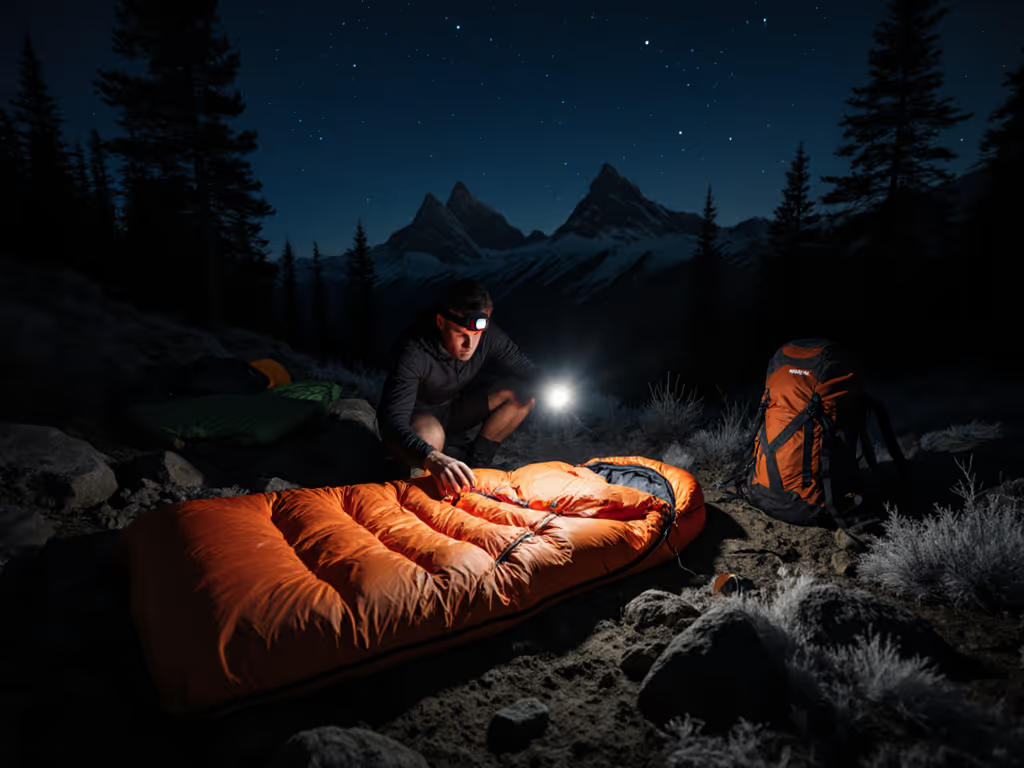
Patriot Wholesale Emergency Sleeping Bag Reviews: 7 Buyer Warnings Every Camper Should Know (Reviewed — Backpacker Sleep does not sell these products)
Unlock actionable ideas for Patriot Wholesale Emergency Sleeping Bag Reviews: 7 Buyer Warnings Every Camper Should Know with step-by-step tips and…
